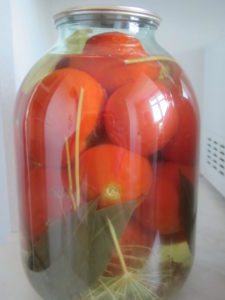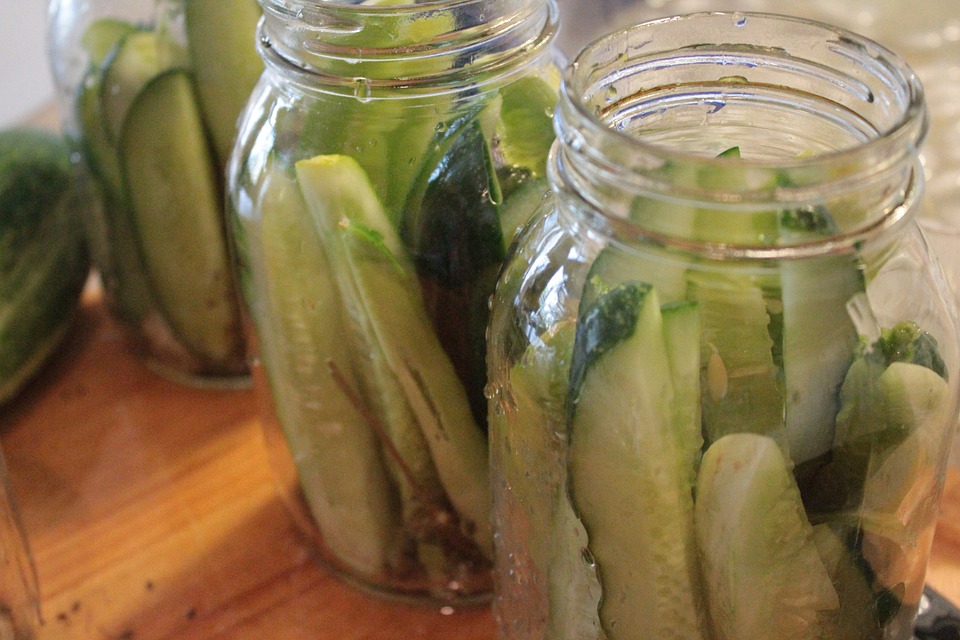Food storage is one of the primary concerns for any survivalist. The average American probably doesn’t realize how much their lives are dependent on refrigeration, which takes a lot of energy to maintain. But one of the key steps towards self-reliance and disaster preparedness is stocking up on food that doesn’t need to be refrigerated. Here are some of the tried and true methods for preserving perishables without refrigeration. While methods like freezing, freeze-drying or canning can seriously deplete the nutritional content of food, these methods will preserve them and, in some cases, enhance the nutritional value. Let’s begin:
Drying:
If you’re prepping, you’re probably already doing this. Drying is an age-old method for preserving fruits, vegetables and even meat. It maintains the nutritional value of produce beautifully, and has the added bonus of making food incredibly light, hence easy to transport and store. It can also be done in a very cost-effective way, depending on your set-up. Most people these days opt for a dehydrator, which can be rather pricey if you want a good one and/or expensive to operate depending on your energy costs. But if you can afford it and have reasonable electric rates, dehydrators are an awesome investment for any gardener, homesteader or prepper and will serve your drying needs for years. Cheaper alternatives are drying boxes, which need only the sun’s rays, or even just simple trays, either laid out in a root cellar or in the hot summer sun.
Oil:
Preserving in oil is also an ancient tradition, and, depending on the quality of the oil and how well you can seal your  container, will keep food for years, possibly even decades. Oil is a natural preservative that seals the food off from any air, which can delay oxidation, deterioration and prevent mold. For survival, preserving food in oil is best for a bunker or homestead where you plan to stay awhile, as it can be rather heavy, and it is of course also just a great and delicious way to preserve a summer harvest through the winter months. One of the great things about this method of preserving is that oil, particularly olive oil, is an excellent source of healthy fat, and fat can be very hard to store as most sources of fat go rancid easily. You can even store cheese in oil, so if you think cheese might be an item you will sorely miss after SHTF, oil preservation is probably an excellent option for you.
container, will keep food for years, possibly even decades. Oil is a natural preservative that seals the food off from any air, which can delay oxidation, deterioration and prevent mold. For survival, preserving food in oil is best for a bunker or homestead where you plan to stay awhile, as it can be rather heavy, and it is of course also just a great and delicious way to preserve a summer harvest through the winter months. One of the great things about this method of preserving is that oil, particularly olive oil, is an excellent source of healthy fat, and fat can be very hard to store as most sources of fat go rancid easily. You can even store cheese in oil, so if you think cheese might be an item you will sorely miss after SHTF, oil preservation is probably an excellent option for you.
Lacto-fermentation:
This is definitely one of the most nutritious options for refrigeration-free food preservation. Lacto-fermentation, or pickling as it’s more commonly known, not only preserves the nutritional value of the food, it actually enhances it, by turning your produce into a delicious, vibrant, probiotic treat. The lacto-fermented foods you will most likely recognize are pickles, sauerkraut and kimchi, but you can do all kinds of other vegetables too. This is also probably the most tricky method, as you are harnessing and culturing living organisms, but it’s really worth it to invest some time into learning the techniques, and it doesn’t take much more than water, vegetables, canning jars, and possibly some whey to get started.
If you liked that, you might also like:
Learn How To SUPERCHARGE your garden or farm…
Click Here To Get The Best Survival Medical Course…
Check Out These Mind Blowing Survival Skills…



Good article! I’m now further intrigued with the oil preserving process! Will be investigating into this more! I currently can, looking forward to an alternative.
My mother was an avid canning person, as was my grandmother and one of my aunts. Ah, should have paid more attention to it.
She had the big pressure canner and did the hot bath method too. Mom made the best pickles and did so for long into her life and when we came for visits we would take back pickles she made as a ‘treat from home’ to have when we got ‘homesick’. She made her own jams and jellies too. I never knew we did not have much growing up as she was a wizard at making such good things for us to have. I have never heard about the oil method and think that would be super…will also try that. Thank you for the info!
Thank you for all the information that you offer. I appreciate it. Most of the population have no idea how to handle their food — they don’t even know how to cook without prepackaged and prepared ingredients.
There absolutely may come a time when skills that are practically unknown and forgotten now may be the difference in life and death. Please permit me to add a few very important aspects of food preserving that may be overlooked by many:
1. Canning can be done on an outside fire or on a wood stove by the water bath method. This method is almost unknown today since, in the 40s and 50s, our mothers or grandmothers were “taught” by the county extension service to use the pressure cooking method, which is an inferior method, resulting in inferior product.
2. Everything from fruits to meats can be safely preserved by the water bath method, and these foods will last for a decade when preserved that way.
3. Canning flats (or lids) can be reused a number of times if they have sustained no dents, bends or damage to the rubber ring. Also many jars from bought foods such as pickles and fruits are great for canning, with their lids lasting for dozens of uses.
4. Don’t forget that the best way to dry foods is by the sun or in a HOT shed. You can use screen, cotton fabric or many other things for the surface of a DIY dryer or use the trays of your electric dryer in the sun if no electricity is available. In fact, use the sun even if electricity is available. It makes for better and more nutrition foods.
Thank you for listening,
Danna G. Hallmark
I tried to buy The Lost Ways, but the system wouldn’t recognize my Postal Code. I think this would be a good lot of knowledge to have. Thank you
I too tried to purchase 3 sets of the Lots ways but the system wouldn’t let me continue!!
Any way we could send a money order somewhere and then they could ship it to us??
Anyone who can find where we can get THE LOST WAYS please let me know
Use this link to purchase the Lost Ways Course Towards the end of the video you will get the link to access the order form.